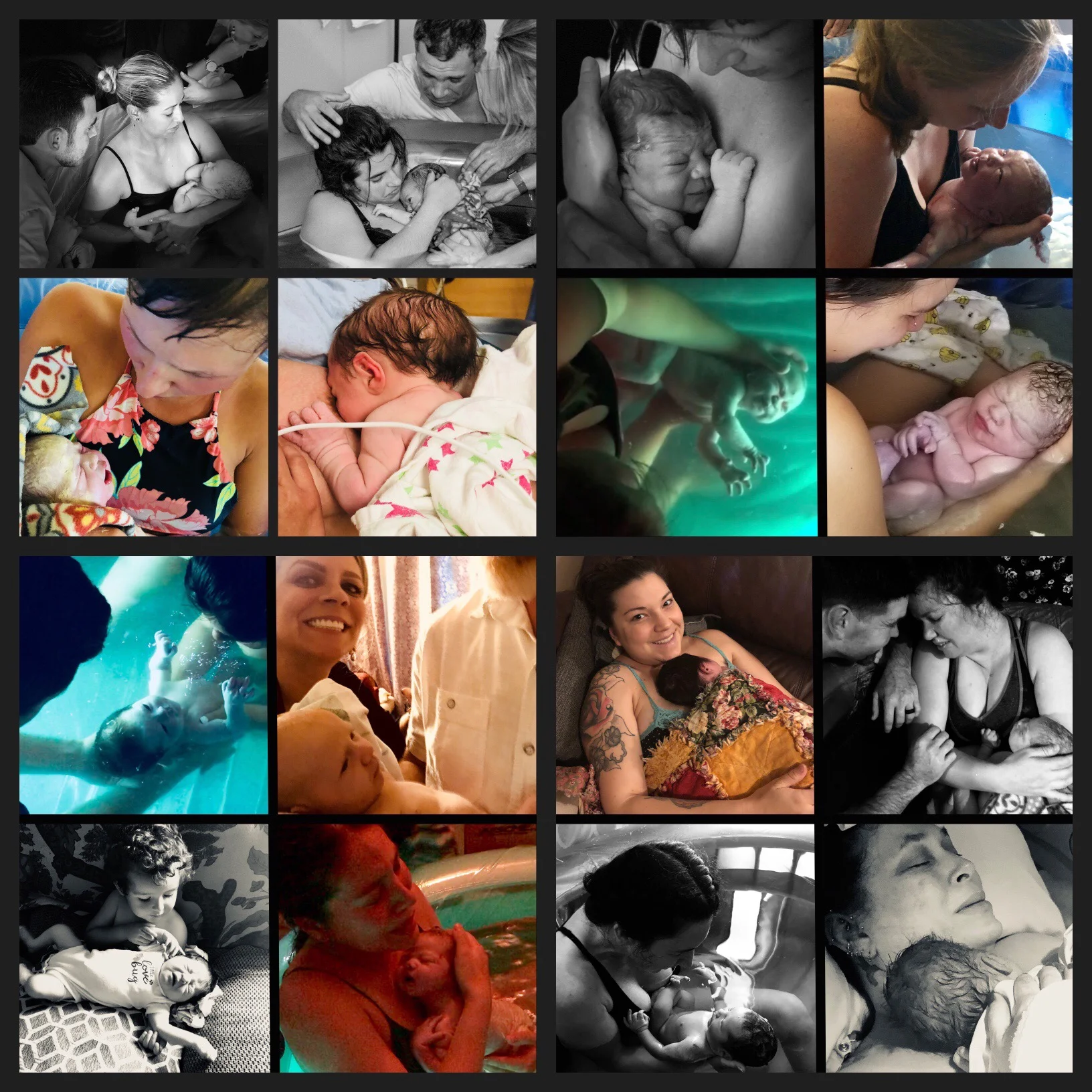HOMEBIRTH FACTS
Thank you for visiting this page. If you are planning a homebirth or are a concerned family member or friend you will find answers to most, if not all, of your questions here. Families that have chosen homebirth are oftentimes overwhelmed by the many questions they receive about their choice. Consider that you are not the only one asking them these questions and they may be left feeling defensive and unsupported. Thank you for taking this time to learn about homebirth. If your question(s) are not answered here please connect with me directly and I would be delighted to speak with you.
What is Homebirth?
Evidenced Based Birth explains who chooses homebirth, the parameters for safety, and some statistics with plenty of links.
Homebirth safety:
Planned home birth: benefits, risks, and opportunities
A new era of home birth research - Science and Sensibility
American College of Obstetricians and Gynecologists has an opinion: “…proportionately more home births are attended by midwives than planned hospital births, and randomized trials show that midwife-led care is associated with fewer intrapartum interventions.”
ACOG may deem the hospital the safest place to have a baby yet they fail to support their claim.
Midwives:
Different states have different requirements. Even if a midwife is Certified by NARM the state, such as California, may require a separate license. I am both a Certified Professional Midwife as well as a Licensed Midwife.
Types of midwives : Certified Professional Midwife, Certified Nurse-Midwife, Traditional Midwife
California State Medical Board Licensed Midwife
What supplies do Midwives carry?
Although each midwife will have slight variations most all will carry the following:
Doppler and Fetoscope to monitor baby
Sphygmomanometer (blood pressure cuff)
Stethoscope
Hemoglobinometer (checks iron level in blood)
Thermometer
Sterile instruments
Topical and injectable anesthetics for suturing
Homeopathic remedies and herbal remedies
Medications for hemorrhaging
Oxygen tank
Resuscitation bag/masks
Suction device for baby for mucous,
Vitamin K (injectable/oral)
Erythromycin eye ointment
I also carry a Rebozo, a Kaya birth stool, a blow up neck pillow, knee pad, TENS machine, flashlights, light for the birth pool, and other miscellaneous items. Many midwives have their clients purchase a Birth Kit that includes items such as gloves, pads, maternity pads, cord care items, trash bags, fish net, and other varying products. I provide a custom assembled Birth Kit for each family.
Reasons to transport:
The number one reason we transport to the hospital is when labors are taking very long and there is a need for pain relief, more common amongst first time birthers. Emergency transports are very rare and should one be necessitated I travel with my family and stay until the birth of baby, if possible.
A full description of various reasons we may transport
Doula's thought on transferring to the hospital
“We believe that collaboration within an integrated maternity care system is essential for optimal mother-baby outcomes. All women and families planning a home or birth center birth have a right to respectful, safe, and seamless consultation, referral, transport and transfer of care when necessary. When ongoing inter-professional dialogue and cooperation occur, everyone benefits.”
Best Practice Guidelines: Transfer from Planned Home Birth to Hospital
Regarding Waterbirth
I have spent the majority of my adult years learning about Waterbirth and practicing what I learn. I have been greatly influenced by the work of Barbara Harper who is my mentor, friend, and the founder of Waterbirth International. She is a Waterbirth expert, gathering the published research on Waterbirth, studying it and interpreting the results; here are some helpful links to some of the research:
Neonatal Outcomes of Waterbirth
The Effect of Waterbirth on Neonatal Mortality and Morbidity
ACNM Hydrotherapy During Labor and Birth, April-2014
Pregnant Pause – Midwife Delivers 50 Years Experience
Cochrane – Immersion in Water in Labour and Birth (Review)
Reevaluating Waterbirth Temperature Guidelines : what is the ideal temperature for the water?
Who sets up the tub for the birth? We provide an appropriate birthing tub for each Birther, based upon height and other factors. Everything is left at the home after the Birth Prep Meeting allowing the partner or someone in the family to set up the tub. Instructions are also left with the equipment.
What prevents baby from taking a breath while being born in water? This link has other common questions people have about Waterbirth in general.
Is there an increased risk of cord snapping, or cord avulsion, in a waterbirth? From Waterbirth International: “This is quoted from Evidence Based Birth, by Rebecca Dekker, RN, PhD:
“In 2014, Schafer reviewed all published cases of waterbirth umbilical cord tearing. An umbilical cord tear is also called umbilical cord “snap,” “rupture,”or “avulsion.” Based on their review, they estimated that there are about 3.1 umbilical cord snaps per 1,000 waterbirths. Out of all the cases of umbilical cord snap, about 23% lead to NICU admission, 13% lead to the need for a newborn blood transfusion, and there have been no reports of any long-term harmful effects. Burns et al. (2012) reported 20 umbilical cord snaps in a study with 5,192 waterbirths and 3,732 land births where women left the tub before giving birth. Eighteen out of these twenty snaps occurred during waterbirth. Unfortunately we cannot compare the overall numbers of umbilical cord snap between waterbirths and land births, because other than the Burns et al. (2012) study, there have been no studies that describe how frequently umbilical cord snaps happen on land.”
My conclusion, after interviewing some of the researchers, is that umbilical cord rupture at birth is generally caused by rushing the baby out of the water very quickly. This is precisely why I recommend a slower delivery with a pause to look for cord entanglement and resolving that, insuring that there is enough cord to slowly raise the baby up out of the water and to wait for a few seconds (with the baby’s head out of the water) before lifting the baby or having the mother lift the baby up onto her chest. The safe approach to preventing umbilical cord snapping during a waterbirth is to allow the baby to do the majority of the work of second stage with the mother breathing through the contraction and only bearing down in the last moments. If she bears down continuously, and expells the baby forcefully, that increases the risk of what I describe as “torpedo babies,” who have the increased risk of also snapping their cords if those babies are entangled. Slow the second stage down, bring the baby up slowly and untangle a baby in the water–if there is an entanglement–before raising them up to the surface.
The majority of the babies who have encountered cord rupture do just fine, but a few are put in NICU for observation and even fewer need transfusion. The ideal for every baby is delayed cord clamping, but it is not always possible. Just consider a cord snap an early cord clamping, which is easily preventable by slowing the birth down just a bit.” Barbara Harper

